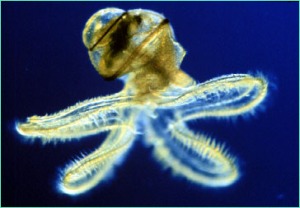This is some footage from the series Shark Men from the National Geographic Channel. These scientists are under the gun to get a great white shark back in the water alive while still gathering all the pertinent data. AMAZING!
More than One Week
Tomorrow is the final day for National Environmental Education Week! It is a special week in schools because all of those children with an aptitude for understanding concepts with examples about nature have finally been able to comprehend all those complex topics they might otherwise have found overwhelming simply because the examples used in class do not inspire them to learn.
The concept of infusing environmental education in all parts of the classrooms is a concept that is few and far between. And, at this point is set aside for this very special week. It is not even part of the requirements for a school to be listed as LEED certified. That is simply based on how the school is constructed. And, one could hope that the students are going to absorb the fact that their classroom lightbulbs are better for the environment than the other school down the block but I doubt it.
I rarely get on a soapbox on this blog but I want to take the time to ask you what does it mean for a school to be green? To me, it should mean integrating environmental themes throughout the year. In recent years an eighth learning style has been identified. This new learning style is the ‘naturalistic’ and many students would benefit greatly from year round green in the classroom. If you would like to learn more on how to integrate environmental themes in the classroom check out these websites:
Japan
My thoughts and prayers go out to the victims of the devastating earthquake on March 11, 2011 in Japan. Because I strongly believe pictures are worth a thousand words to illustrate the damage and destruction visit National Geographic to view a very powerful post of before and after images.
It’s as Easy as A, B, Sea: A Review
We did it! Here is the Beach Chair Scientist’s 2011 version of the A, B, Seas.
It’s as easy as A, B, Sea: Z is for Zooxanthellae
Zooxanthellae are the photosynthetic organism that live within coral reefs and supply the food to the reef building corals. They have a symbiotic relationship with the other protists but can also live an independent life. Enjoy this quick video about the process!
It’s as easy as A, B, Sea: Y for Yellowfin Tuna
Yellowfin tuna are the most commercially sought after of all tunas.  They have a football shaped body and can reach up to 450 pounds. Which is very impressive since they can also swim up to 30 miles per hour. Yellowfin tuna prefer to swim in schools in all temperate oceans. They prefer to eat fish any fish smaller than themselves and their biggest predator tend to be sharks.
They have a football shaped body and can reach up to 450 pounds. Which is very impressive since they can also swim up to 30 miles per hour. Yellowfin tuna prefer to swim in schools in all temperate oceans. They prefer to eat fish any fish smaller than themselves and their biggest predator tend to be sharks.
Image (c) ilovebluesea.com
It’s as easy as A, B, Sea: X for Xiphosura
Xiphosura is the order of the Atlantic horseshoe crab and its three closest living related species.
It’s as easy as A, B, Sea: W for Weddell Sea
It’s as easy as A, B, Sea: V for Veliger
It’s as easy as A, B, Sea: U for Upwelling
Upwelling is the phenomenon of wind moving surface waters thus to make way for cold, dense water that comes from the bottom of the ocean. It seems to most often happen on the west coast of continents. That is why you typically need a nice wet suit all year round to go surfing in California.









What people are saying …